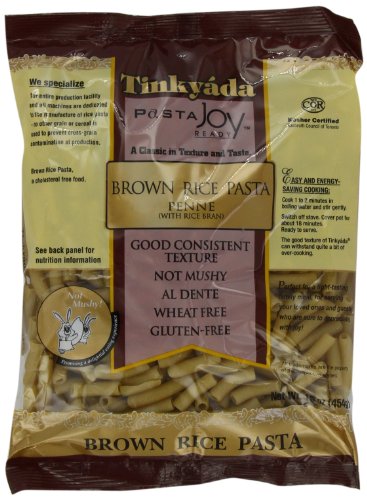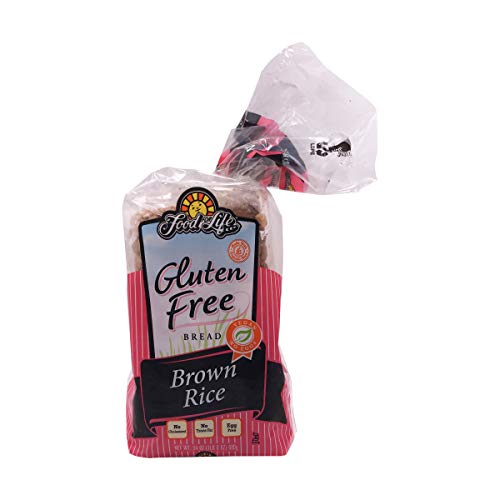An Anti-Flatulence Diet Plan of certain foods can help lessen the risk of bloating, gas, flatulence, and indigestion.
If you want to avoid bloat and gas from certain foods, then you’ll find plenty of lists of things you should avoid eating. But they don’t actually tell you anything useful about which food might help.
One of the reasons for this is that most foods cause bloating, gas and flatulence. Unfortunately, many of the worst gas causing culprits are the foods that are the most nutritious and healthy for us!
This article will cover foods that will not cause much bloating and gas production when eaten. We’ll also cover food combinations to avoid and certain diet practices that can help minimize the amount of gas the body produces. There are also various ways to help your digestive system do its job.
Best Foods That Cause Less Bloating and Gas
Here are useful lists of food that won’t result in much gas and bloating.
Low-Carbohydrate Vegetables
- Bamboo shoots
- Bok choy
- Carrots
- Celery
- Cucumber
- Eggplant
- Endive
- Fennel
- Green beans
- Greens (chard, collards, endive, kale, lettuces, mustard greens, spinach)
- Herbs (basil, chervil, cilantro, dill, mint, oregano, rosemary, tarragon, thyme)
- Jicama
- Lacto-fermented vegetables (i.e. kimchi, pickles, and sauerkraut are low gas producers – they also aid digestion)
- Mushrooms
- Okra
- Pumpkin
- Radicchio
- Scallions
- Sea vegetables (i.e. dulse, nori, sea lettuce, seaweed)
- Sprouts (alfalfa, broccoli, clover, lentil, mung bean, radish; also legumes, when
sprouted, are low in carbs) - Tomatoes
- Water chestnuts
These vegetables have a bit more carbohydrates, but are still good options for less flatulence.
- Avocado
- Celeriac
- Chives
- Coconut
- Dandelion greens
- Peppers (orange, red, and yellow – not green as it’s difficult to digest)
- Snow peas
- Spaghetti squash
- Yellow and/or green summer squash
- Yellow wax beans
- Zucchini
Low-Sugar Fruits
There are specific sugars that are known to cause gas and bloating – fructose, lactose, raffinose, and sorbitol.
Fructose is naturally present in some fruits, vegetables, and wheat. To avoid gas production, focus on eating fruits low in sugar:
Raw fruits that contain low to medium sugar content (not canned or stewed):
- Apples
- Apricots
- Blackberries
- Blueberries
- Cantaloupes
- Casaba melons
- Cranberries
- Gooseberries
- Grapefruit
- Guavas
- Honeydew melons
- Huckleberries
- Kiwis
- Lemons
- Limes
- Nectarines
- Papayas
- Peaches
- Pears
- Plums
- Rhubarb
- Raspberries
- Salmonberries
- Strawberries
- Watermelons
Besides having low sugar content, berries like strawberries and raspberries are rich in vitamins and antioxidants. They are great to add to creeal and salads. Grapefruit is great in salads, especially when paired with avocado slices.
Non-Gassy Proteins
Generally, fatty foods and protein-rich foods cause very little gas and flatulence compared to carbohydrate-rich food.
These are protein food options:
- Beef (lean)
- Cheese (hard)
- Chicken (white meat)
- Eggs
- Fish
- Peanut butter
- Turkey (white meat)
Low Flatulence Wheat Alternatives
As we age, our bodies may develop intolerance to some foods, making them less digestible. Wheat can be one of those foods that has trouble breaking down.
For people who have trouble digesting wheat, fermentation and gas build-up will occur. Luckily, there are wheat alternatives that will be easier on the digestive system That will mean less gas and bloating.
- Cereal grains (same family as wheat): corn (may cause some flatulence), millet, rice, teff, and wild rice; flours ground from these foods are good substitutes for wheat flour
- Non-cereal grains: quinoa flour is unsuitable for baking bread, but excellent for cookies and quick breads; rinse it for a few minutes to cleanse off the saponin, an enzyme inhibitor that can cause flatulence
- Nut meal: ground nuts such as almonds, hazelnuts, or walnuts make a rich flour substitute for cookies and cakes; their short shelf life makes grinding your own with a food processor on an as needed basis preferable; introduce them slowly or their high fiber content may cause flatulence
- Pasta comes in rice, corn, and quinoa varieties; some rice pasta brands are available in numerous varieties including elbow, shells, spaghetti, lasagna, and penne as well as fun shapes for kids.
- Rice bread is made from rice flour and contains no allergy-inducing ingredients: rice is the only starch that produces no flatulence.
Depending on where you live, you may need to go to a specialty food store to find rice pasta. If you want to look online, you can find a number of options online at Amazon.com:
Dairy Substitutes That Don’t Produce Bloating
Some sugars can cause bloating, gas, and flatulence. Lactose is also a sugar, so if you are lactose intolerant, try incorporating some dairy alternatives.
These dairy alternatives can be used just like regular dairy products. They can be used as cheese in traditional comfort food dishes, milk with cereal, eaten as desserts, or used when baking goods.
They can be used in place of traditional comfort foods, such as cheese and the dairy milk that goes with cereal, as well as eaten as desserts or used in baked goods.
- Soya and tofu cheese comes in hard and soft forms, including cream cheese and cheese slices
- Desserts: soya cream, Soyasun desserts, soya ice cream, and soya vanilla dessert (a custard substitute)
- Milk Options: Almond milk, oat milk, rice milk, and soya milk
- Soya yogurts (no refrigeration necessary)
- Live soya yogurts containing beneficial cultures (refrigerate)
- Yeast flakes: sprinkle onto dishes for a cheesy flavor (contains lots of vitamin
B) - Avocado, guacamole, humus, and tahini for sandwich spreads and salad dressings
Soy milk is popular as a non-dairy milk alternative, because it’s the richest of the milk alternatives. That makes it the best option for drinking, cooking, baking, and with cereal. If someone is allergic to soy, it will make the person bloated and gassy.
Almond milk is more creamy and a bit sweet. It contains essential nutrients and is high in vitamin E. Many people will even try to make their own almond milk, flavoring it with maple syrup or other flavors. While almonds might lead to gassiness in some people, most say that almond milk will not.
For those who are lactose intolerant and do want some dairy products, you can try eating aged dairy cheese and yogurt to help with bloating and flatulence. There are lactose free Greek yogurt options as well.
Avoid Bloating and Flatulence Producing Combinations
Looking at single, specific foods that cause bloating and flatulence can help, but sometimes it may be eating and/or preparing certain food combination that is the cause. Let’s take a look on how to avoid bloating and flatulence.
Cook Raw Vegetables
Vegetables are often touted for their health benefits, but that’s only if the body digests them. Not all vegetables are digestible by all bodies. Digestion can be even harder if the vegetables are not cooked.
For example, broccolli and others from the cruciferous family (cabbage, cauliflower, Brussel sprouts, collards, and kale) are hard to digest for some bodies. That’s why it’s not often recommended if you’re trying to reduce flatulence and bloating.
Vegetables are easier to digest when cooked. Some even must be cooked to be digestible. The human digestive system can have trouble properly digesting fiber in certain vegetables.
This article has vegetable lists that are less likely to produce bloating, but you can also try other vegetables to see if they will result in gas. Try cooking cooking those vegetables and see how your body digests the vegetables.
Make Fruit and Vegetable Smoothies
One of the easiest and best ways to enjoy your daily nutrition requirements is with a smoothie. Blend your favorite fruits and vegetables into a smoothie to take it on the go.
Blending the vegetables and fruits will also help with digestion, because blending will help break down the cellulose fiber in vegetables that leads to gas and bloating.
Here are a few smoothie recipes that you can try out. Blend the following ingredients in a juicer until smooth:
Smoothie #1: Very Berry
- 1 small carrot, peeled
- 1/2 cup blueberries
- 1/2 cup raspberries
- 1/2 cup strawberries
- 1 cup 2% milk
- 1 cup unsweetened apple juice
- 2 cups ice
Smoothie #2: Healthy Mix
- 3 fresh carrots, peeled
- 1 cucumber, peeled and chopped
- 1 Golden Delicious apple, quartered and core removed
- 2 handfuls of cashew nuts
- 1/2 handful of sunflower seeds
- 1/2 teaspoon of salt
- 3 tablespoons of yogurt
- 1 small cup pear or apple juice
Smoothie #3: Tantalizing Tomato
- 2 cups (chopped) tomatoes
- 1/2 cup carrots
- 1 stalk of celery
- 1/2 cup tomato juice
- 1/4 cup apple juice
- 3 tablespoons fresh lemon juice
- Tabasco or hot sauce to taste
- sea salt and freshly ground black pepper to taste
- 2 basil leaves
- 2 cups ice
Avoid Gassy Food Combinations
Avoid Fried and Spiced Foods
Any deep-fried or pan-fried food top the list for causing gas.
Spices like chili, ginger, and coriander usually help to aid digestion, but some people also claim spicy food gives them gas.
But it might not be those spices causing the gas problems. Food prepared with those spices will also be combined with coconut milk, which contains fat that can also block proper digestion.
- Related article: Is Coconut Milk Good for IBS
Chewing More Results in Less Gas
Eating quickly and not taking your time to chew will increase the risk of swallowed air, which leads to more bloating.
Pasta is a popular food when cooked correctly, doesn’t require much chewing. Some doctors will also suggest that if you chewed pasta sufficiently, it will cause less bloating, gas, and flatulence.
Check the Nutrition Labels
Check for ingredients in the products that you’ll want to avoid. There are sugars and artificial sweeteners in dietetic candies, sugar-free gums, and other foods and drinks to avoid.
Common artificial sweetners and sugar alcohols to avoid include cornstarch, sorbitol, erythritol, mannitol, maltitol, and xylitol.
Other specific ingredients to check for and avoid if you readily have gas include:
- Fructose – Fruits, druit drinks, vegetables, and wheat.
- Lactose – Milk and milk products, such as cheese and ice cream. Processed foods like cereal, bread, and salad dressing.
- Raffinose – Beans and cruciferous vegetables.
Strengthen Your Digestive System
Strengthening the digestive system will help with reducing and preventing gas. A lack of digestive enzymes is often tied to flatulence and gas. Increasing the amount of digestive enzymes can help with IBS symptoms. Learn about the best enzymes for IBS.
Increasing zinc in your diet can help with enzyme production. Zinc is naturally found in beef and shellfish.
A zinc deficiency is often linked to an enzyme deficiency. A lack of zinc means your digestive system will have trouble breaking down food because there aren’t the enzymes to break it down.
Taking a digestive enzyme supplement after or during meals can help people with flatulence. The supplements will help ease the effects of a lack of enzymes. Look for digestive enzymes that include these:
- Amylase
- Bromelain
- Lactase
- Lipase
- Papain
- Peptidase
- Protease
If you’re not lactose intolerant, yogurt is an enzyme-rich food that is easily digestable. Yogurt contains digestive enzymes and probiotics.
Yogurt contains Acidophilus and Bifidobacteria that are vital in the digestive process. Yogurt and buttermilk will help to reduce the flatulence that the body produces.
Check out the Best Tips for Good Digestion.
Eating Habits That Lessen Gas, Bloating, and Flatulence
Watching how you eat, what you eat, and how long you wait before eating again can all affect your stomach’s ability to properly digest food.
Here are the top tips for eating habits:
- Eat in a relaxed atmosphere
- Eat and drink slowly
- Chew your food well
- Avoid overeating, and eat smaller meals and snacks more often rather than fewer
larger meals - Exercise regularly; a walk after meals is ideal
- Drink plenty of fluids, but not with main meals as fluids can interfere with digestion
- Avoid talking while eating, drinking through a straw, and/or chewing gum and/or
eating hard candy (to avoid swallowing excess air) - Avoid carbonated drinks and beer, and sip rather than gulp beverages to lessen amount of air swallowed
- Drink plenty of water throughout the day. Water helps to keep the digestive tract lubricated and clean.
- Avoid smoking (air is inhaled and swallowed when you smoke)
- Don’t chew gum or tobacco
- Ensure dentures fit properly (poor-fitting dentures can cause excess air-swallowing when eating and drinking)
Final Thoughts
Use the list of low-flatulence producing foods to help with adjusting how you eat to lessen the risk of bloating and gas. There are also a number of other good ways to avoid gas.
First, fat and protein foods will cause less flatulence compared to carbohydrates and foods high in soluble fiber.
Rice is the only starch that won’t lead to flatulence. Starches like corn, noodles, potatoes, and wheat; and sugars like fructose, lactose, sorbitol, and raffinose will cause bloating and gas.
Second, test out different foods to see what your digestive system is able to digest before limiting your diet. It’s better to test out different foods as what affects one person may not affect you. It’s better than a blanket diet plan to avoid bloating, gas, and flatulence. Learn more about food combinations for good digestion.
Third, stick to less gas-producing foods when it’s important to be gas-free, such as social occasions, a job interview, or a first date. You can incorporate small amounts of bloating and flatulence-producing foods that you enjoy as a treat.
Lastly, daily digestive enzyme supplements daily and eat digestive enzyme-rich foods, such as yogurt. Eat foods that will help decrease the amount of bloating and flatulence the body produces.
There are many considerations when trying to reduce bloating, gas, and flatulence. With a little focus and some changes, you can do it.
If you have a physical protrusion from the bloating, talk to your doctor as that is a signal of possible stomach distension.
To learn about about the other side of the conversation, here are the Foods That Cause Gas, Bloating, and Flatulence.





